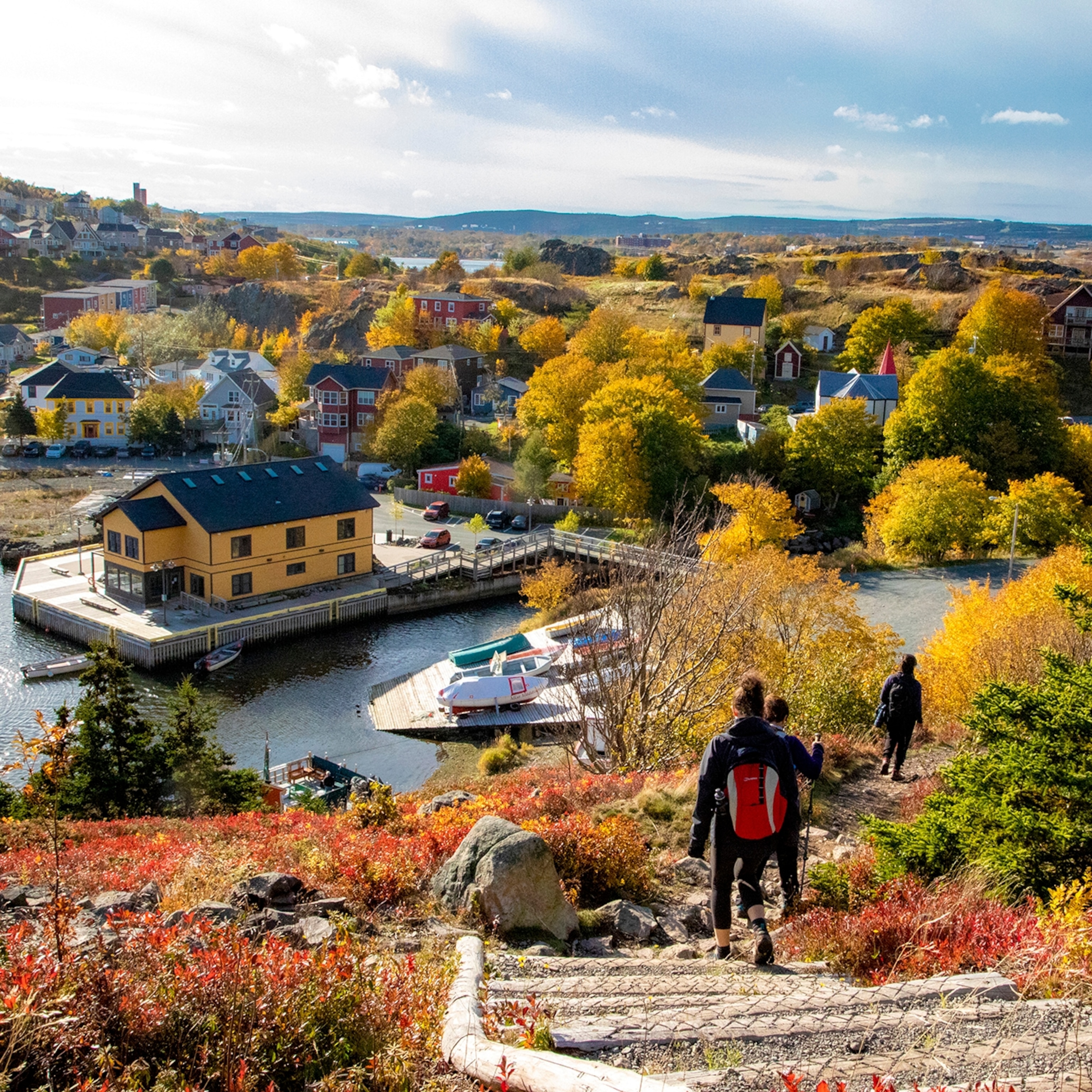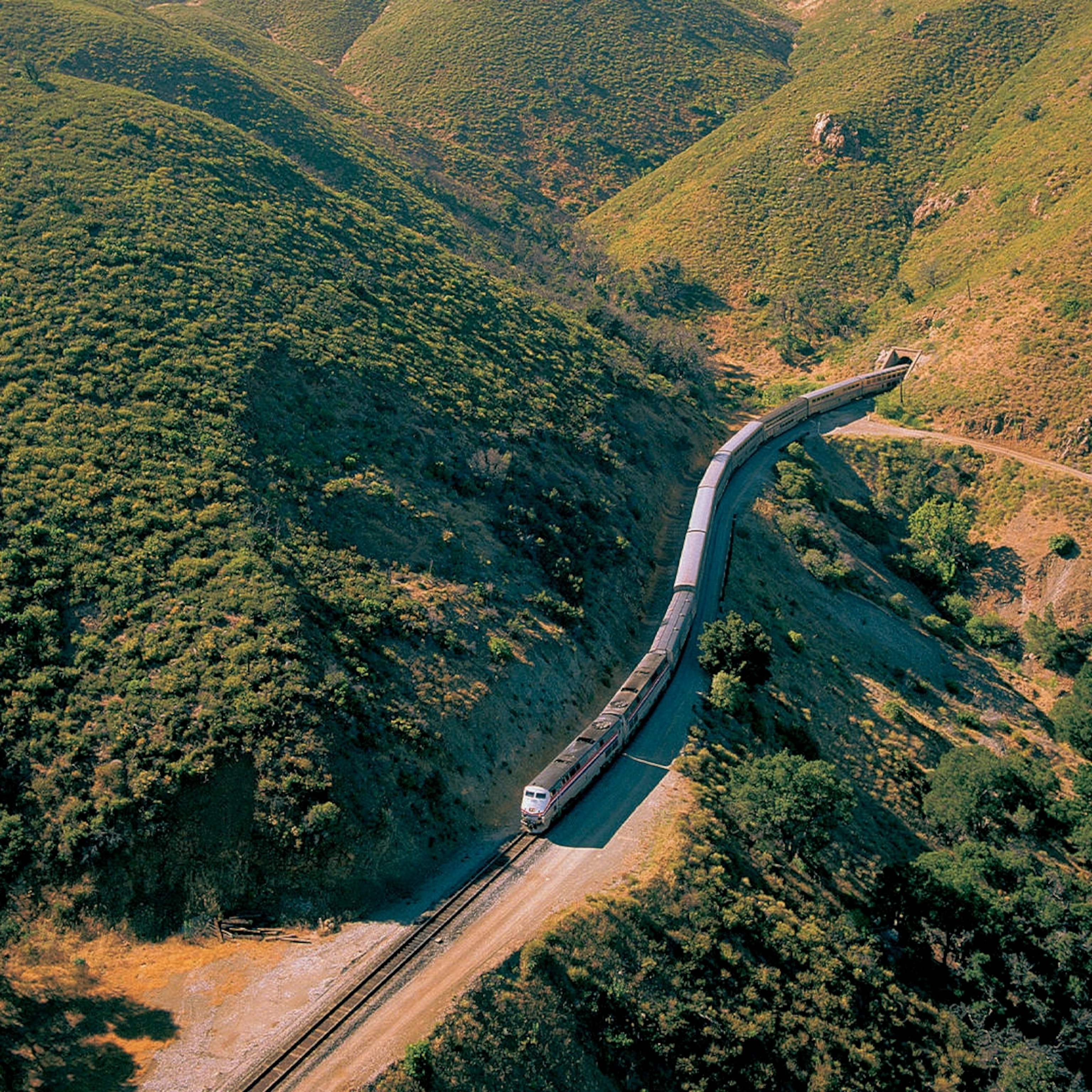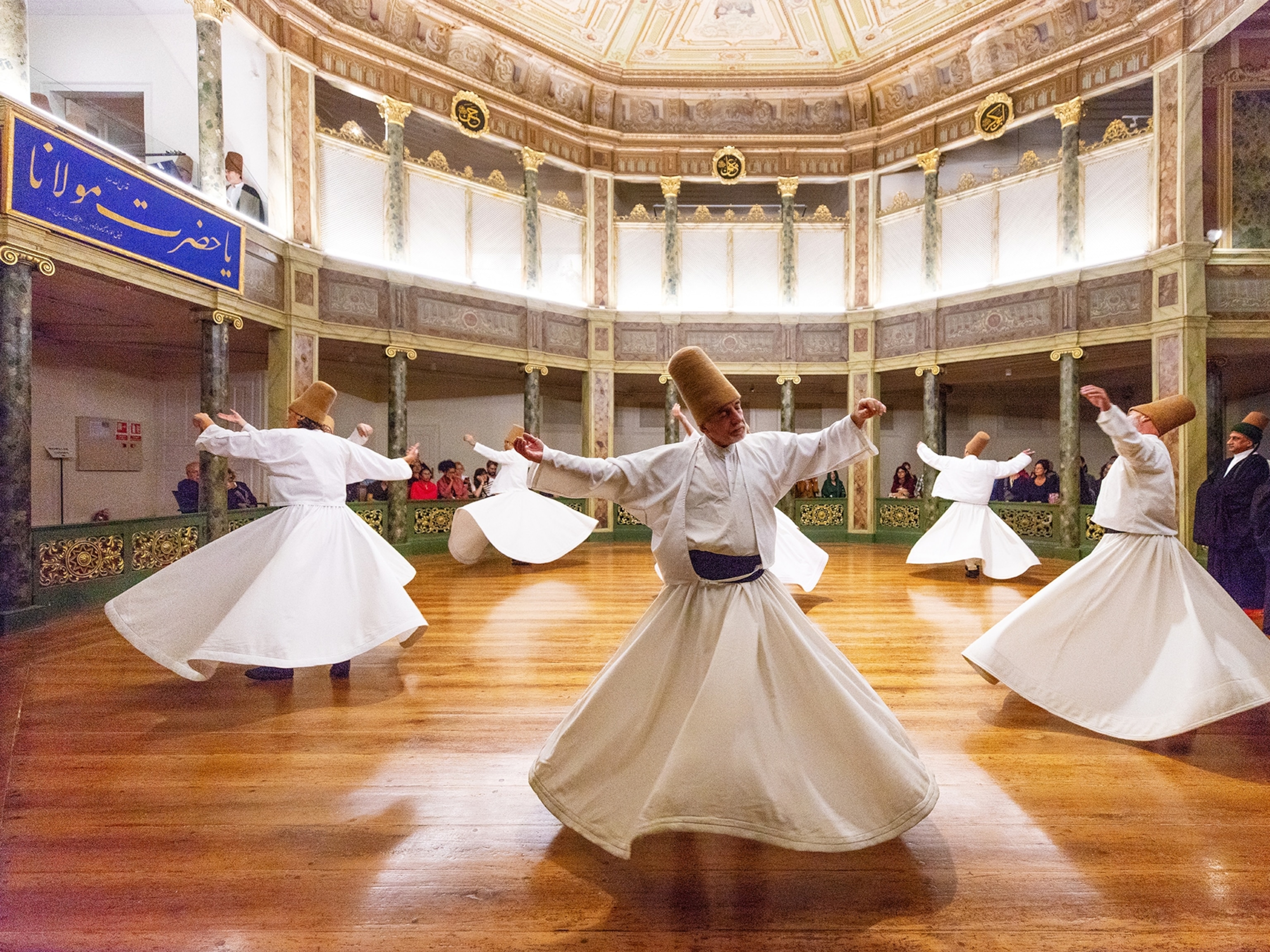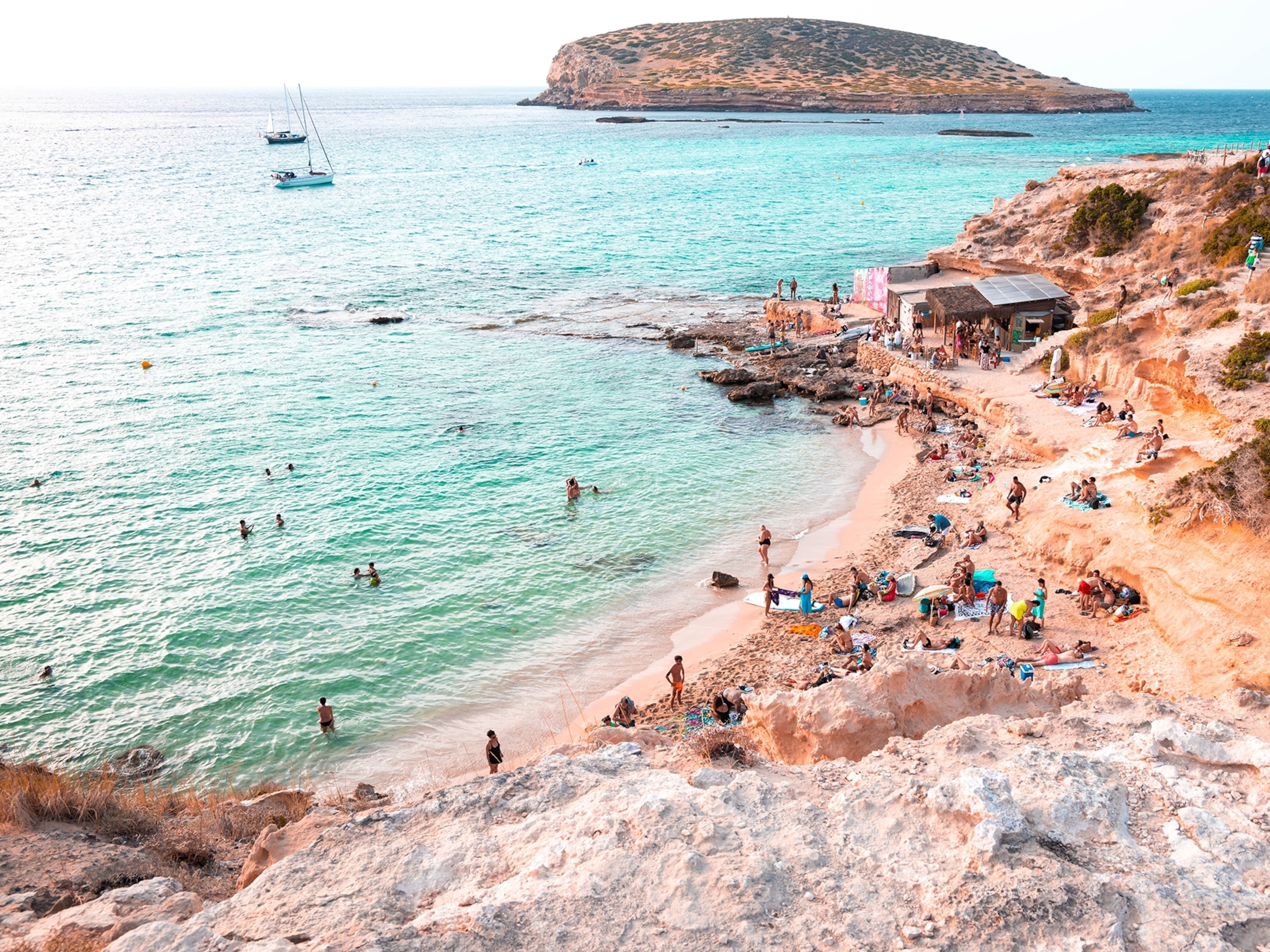23 unmissable experiences in Turkey
While many visitors are drawn to Turkey for its southern beaches and inviting coves, those in the know also come for scenic train routes, hikes through cave cities and traditional taverns surrounded by ancient Greek, Roman and Byzantine relics.
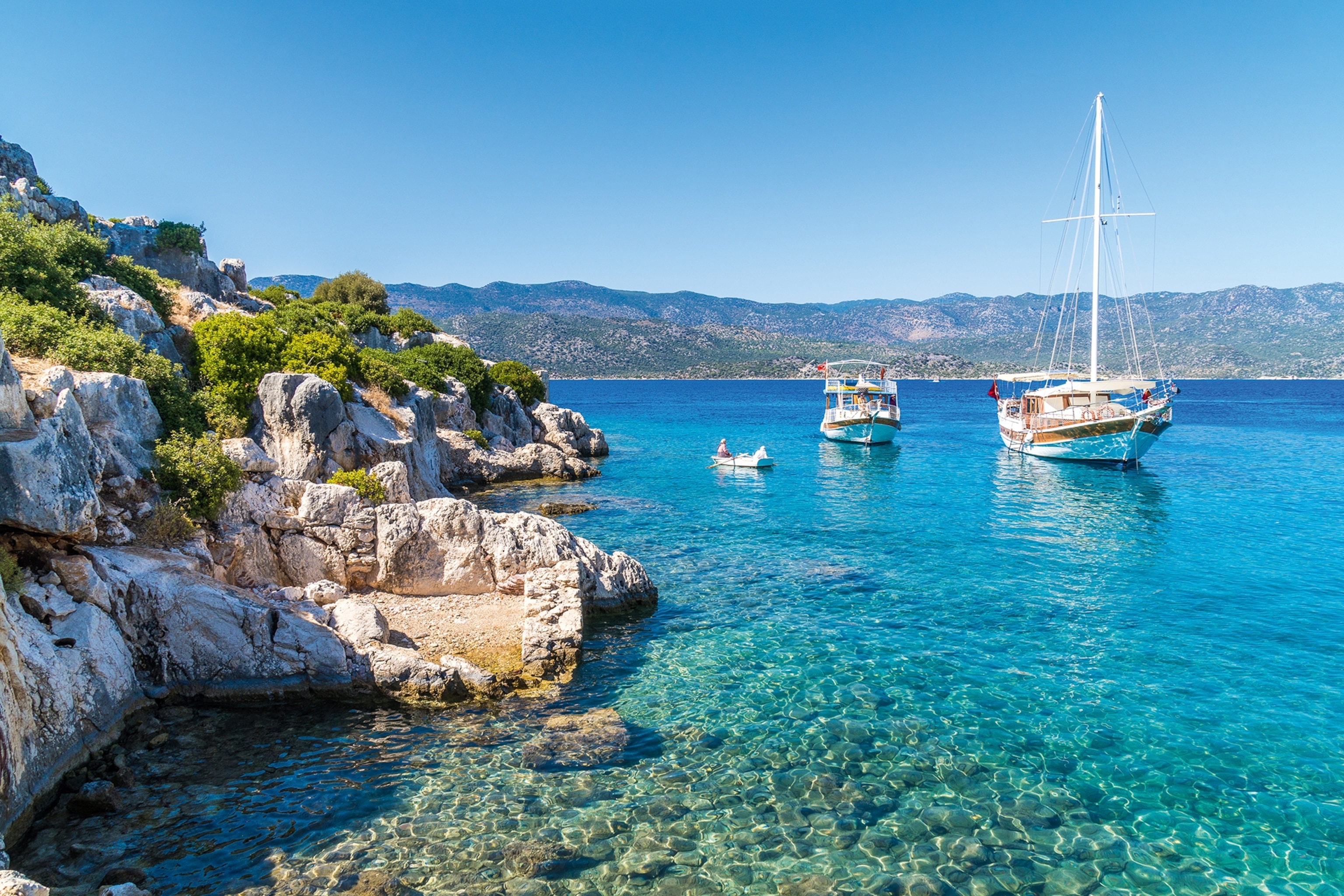
1. Hike Cappadocia’s cave cities
This region in central Turkey is an upside-down world: there are as many as 60 subterranean cities, while its terrestrial landscape resembles the interior of a cave system, covered in stalagmite-like rock pillars known as ‘fairy chimneys’. They’re caused by wind erosion but are named for the folkloric belief that they were created by the djinns (genies) who live beneath the ground. The typical image of Cappadocia, adorning coffee cups and postcards, is that of dozens of hot air balloons soaring above the landscape. But the best way to see the fairy chimneys and rock cities is not from the sky, but with both feet on the ground. Go for a hike through the area’s series of interconnected valley trails, and you’ll find the landscape is surprisingly fertile up close — the smell of apricot carries on the breeze, trees ripe with plums and black mulberries may line your path, while rock-cut houses rear up above you on the hillsides. DS
(Why the cave cities of Turkey's Cappadocia are best explored on foot.)
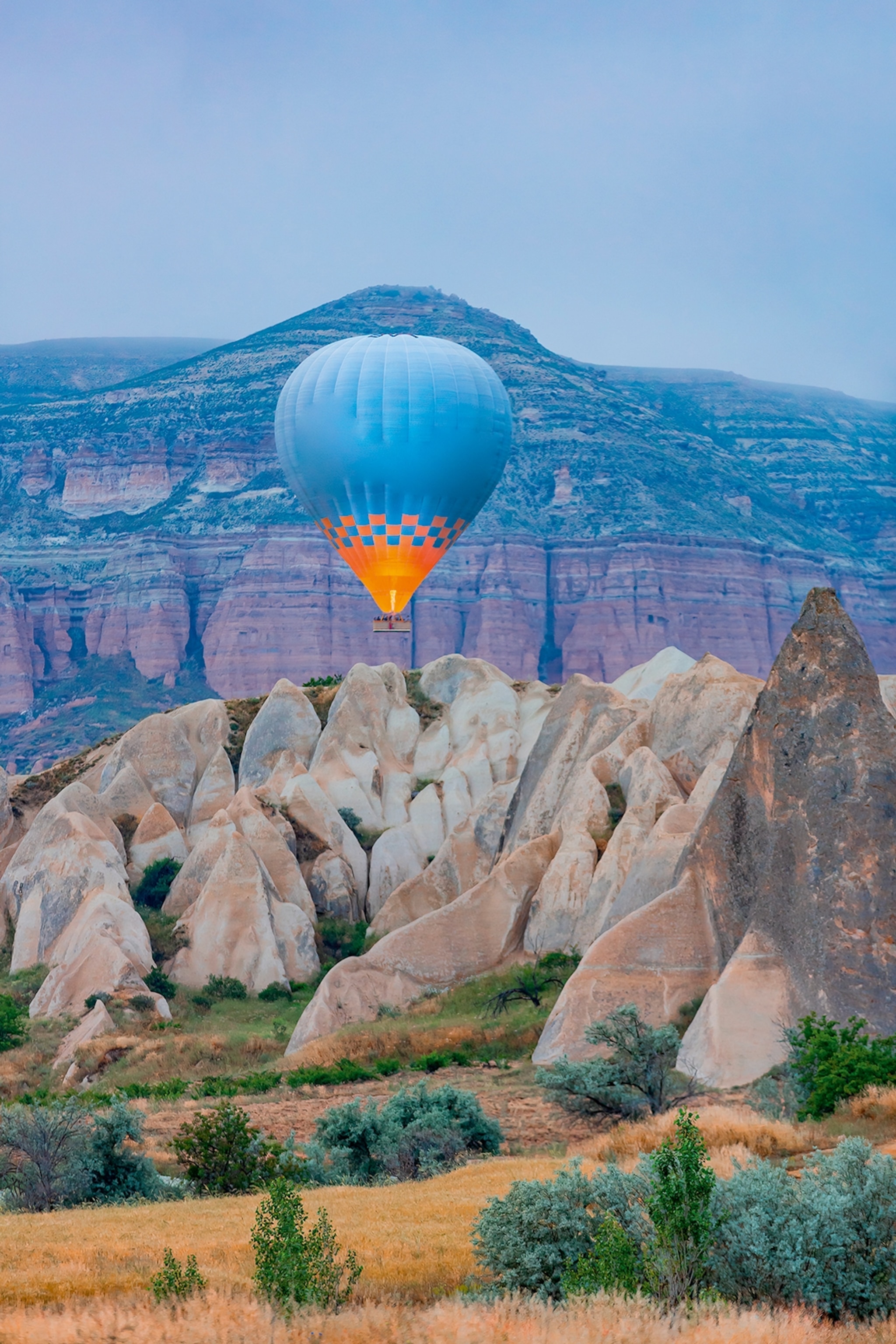
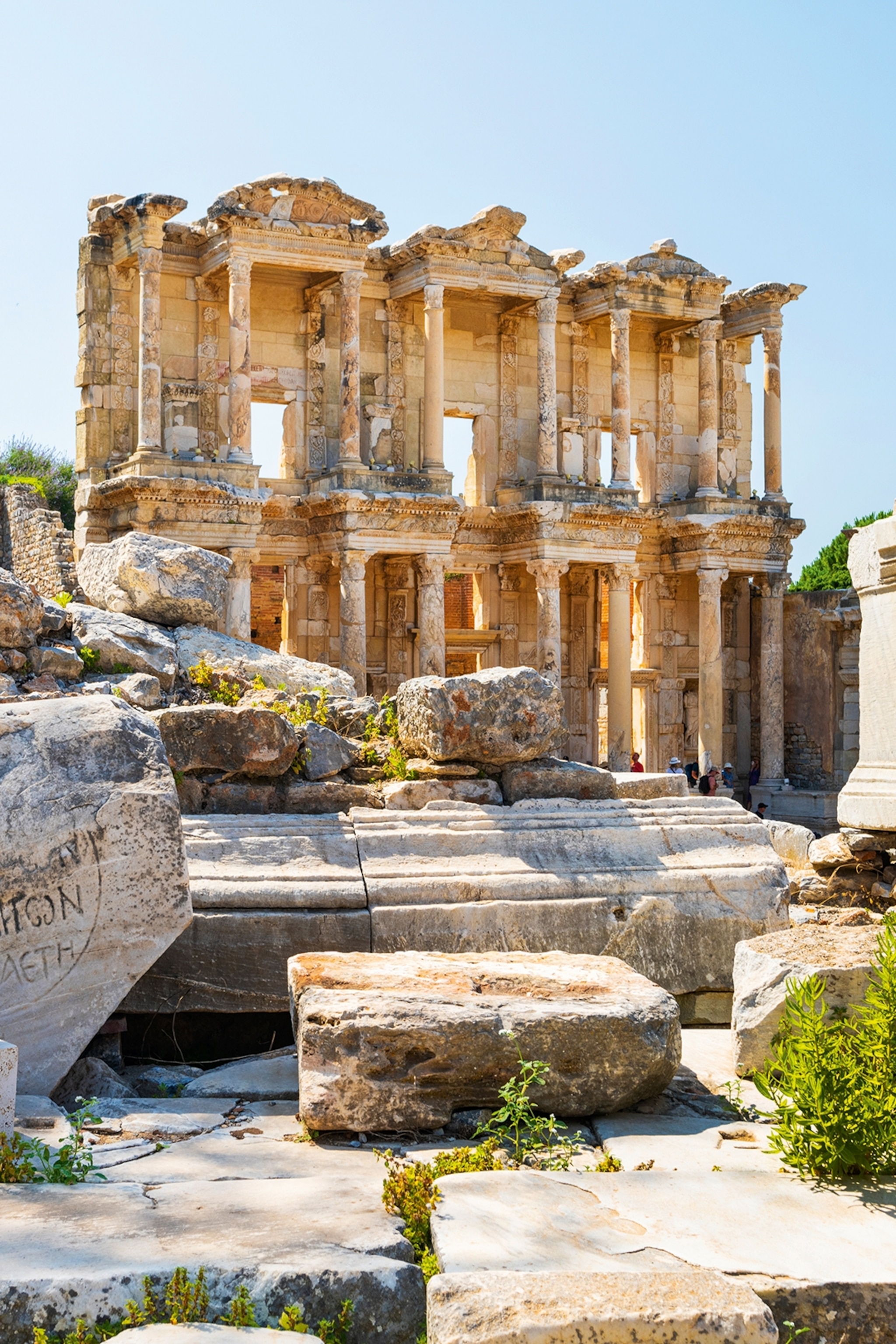
2. Trace an ancient city at Ephesus
There’s no other site in the Mediterranean where the classical world can be imagined as clearly as at Ephesus. This UNESCO-listed ancient city sprawls for around 1,000 acres, edging the village of Selçuk, south of İzmir. Settlement here dates back to 6000 BCE, although the city is chiefly famous for its era as Roman capital of Asia Minor. Today, carriage-rutted stone roads lead visitors to a 25,000 seat Roman theatre, the two-storey facade of the Library of Celsus and a terraced house complex, once home to the city’s wealthy, decorated with frescos and mosaic floors depicting Roman gods, gladiators and floral motifs. JL
3. Bag local crafts in Eski Datça
With its cobbled lanes framed by pink bougainvillea and artisan shops in stone cottages, Eski Datça village encapsulates laid-back Aegean life. A two-hour sail south of Bodrum’s beaches on the Datça Peninsula ferry, the pretty settlement is a popular spot to browse boutiques selling local crafts. Caria Silk is revitalising regional silk-weaving traditions with its hand-loomed, hand-dyed creations, while Elde Sanat offers handmade leather sandals and chunky jewellery. Head to Özlü Datça or Olive Farm for local organic olive oil and almond butter. JL
(Photo story: tombs, turquoise seas and trekking along Turkey's Lycian Way.)
4. Sail the Riviera on a ‘blue voyage’
Where sapphire waters lap uninhabited coves in southwest Turkey, there’s no better way to explore than by gulet — a traditional wooden sailing ship. Small cruises, coined ‘blue voyages’ because of the intense sea colour, allow you to hop between bays, with paddleboarding and snorkelling offered as activities. Travellers can dive into underwater caves around Kaş or swim through the ruins of an ancient Roman bathhouse near Göcek, named after Cleopatra, who’s claimed to have visited. Day trips and week-long charters sail from all major coastal towns, including Bodrum and Antalya — but the most scenic stretch is around Marmaris, where forests cascade down the mountainsides. BY
5. Follow the Lycian Way
Celebrating its 25th anniversary this year, Turkey’s first long-distance walking route meanders for 472 miles across the southern Teke Peninsula between Fethiye and Antalya. Offering a different perspective on this popular coastal area, it traverses pine-clad peaks and cliffs, between rural villages and the ruined cities of the Lycian people who prospered here over 1,000 years ago. Most trekkers tackle a three- to five-day section; one of the most scenic starts from the western trailhead at Ölüdeniz and heads across the Seven Capes to the Patara beachfront ruins. JL

6. Paraglide over Ölüdeniz
It’s not surprising that Ölüdeniz is Turkey’s premier tandem paragliding destination. This slice of southwest coast — where waves of green hills pitch downwards to Ölüdeniz Nature Park’s famed blue lagoon, sheltered by a sandy spit — is best appreciated on an aerial descent. Tandem paragliders launch from Baba (8,533ft), which looms over the seafront. For a taste of the views, minus the adrenaline, there’s a cable-car. BY
7. Kitesurf in Akyaka
The coastal town of Akyaka is Turkey’s top spot for kitesurfing. A two-hour drive from Bodrum, its secret is strong, steady thermal winds from May to November. With gusts blowing favourably from sea to shore and kitesurfing schools offering classes, it provides a safe environment that’s perfect for beginners. And there’s more: Akyaka has lively bars, restaurants and yoga retreats still untapped by the international traveller circuit. Follow locals on a night out to Geyik Sayfiye for craft cocktails by award-winning mixologists or dine out in style at summer pop-ups of famed Istanbul restaurants like Rutin and Basta. BY
8. See Turkey’s Yosemite
Few international travellers except keen birders know about Aladağlar National Park. Located in southeast Turkey, roughly 90 miles south of Cappadocia’s Kayseri Airport, it’s a prime area for summer hikes amid dramatic mountain scenery. Trails wind across high pastures, where shepherds graze flocks, and forest-clad slopes lead up to craggy plateaus studded with lakes. Base yourself in the village of Çukurbağ for independent exploration, or arrange a multi-day trek with Cappadocia-based tour operator Middle Earth Travel. JL
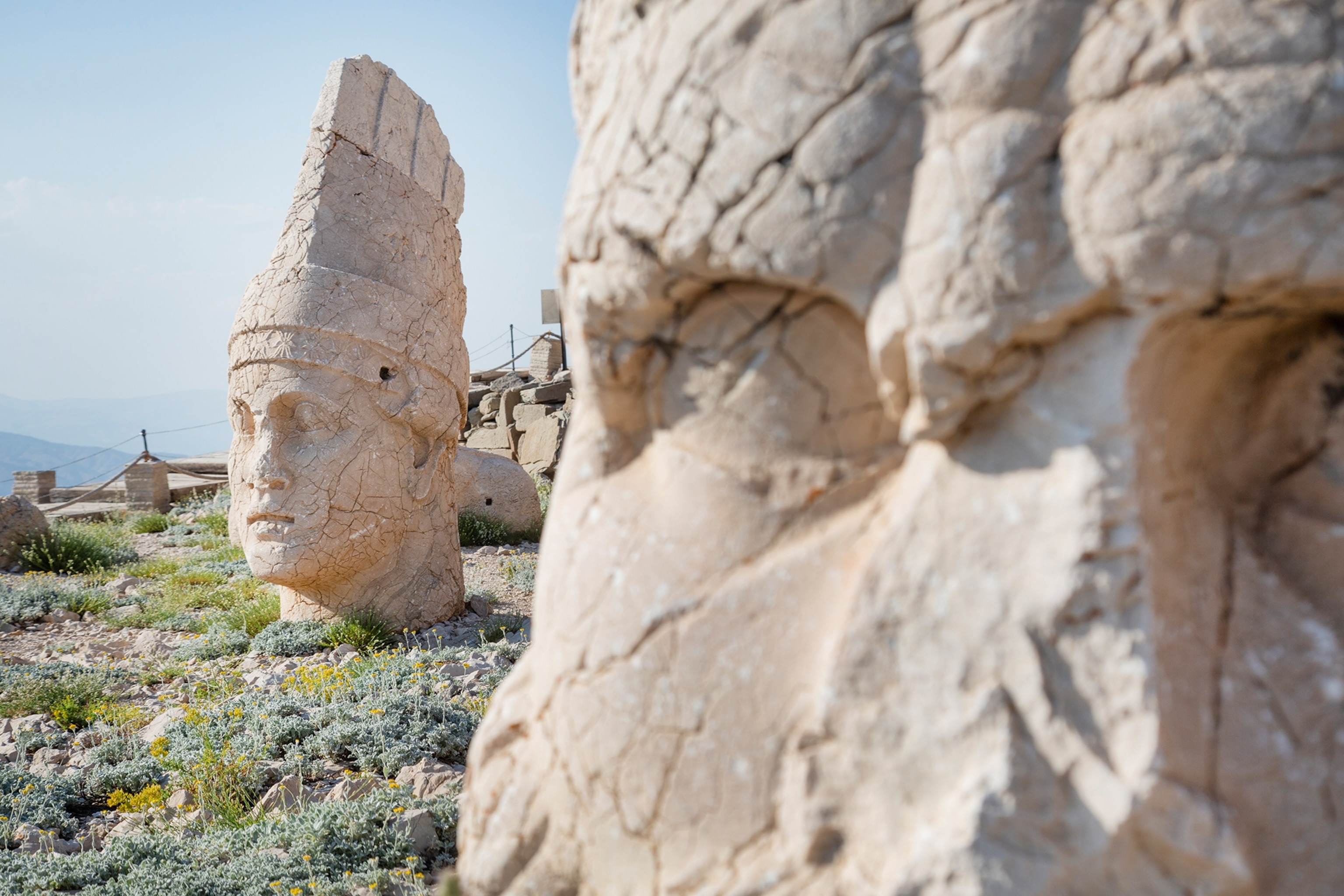
9. Seek Mount Nemrut’s stone heads
At sunrise and sunset, travellers scale eastern Turkey’s Mount Nemrut’s summit to find the decapitated stone heads of toppled figures. They’re all that remains of the reign of King Antiochus, who ruled the Commagene kingdom from around 70 to 38 BCE and built the gargantuan statues as a monument to himself. They sit atop his colossal, 165ft-high burial mound. Visit during the day to avoid the crowds. JL
10. Party on the beach in Çeşme
Every summer, local party-goers flock to the Çeşme Peninsula to experience Turkey’s best nightlife. Dip into the scene by reserving a sunbed on the beach at renowned club Before Sunset, where a boho crowd dance the night away to house music. Tarla, a farmhouse turned open-air tiki bar, is another highlight, hosting live acoustic nights. Or visit Open Bar, a locals’ speakeasy that attracts renowned Turkish DJs such as Barış K and Memo Garan. Base yourself at The Stay Warehouse, a converted warehouse with a 24-hour pool and music events in Alaçatı town. From €400 (£336), B&B. BY
11. Explore Turkey by train
Turkey’s rail network remains one of its best-kept travel secrets, offering everything from scenic day trips to long-distance sleepers. Many of the routes connect travel sites across the country and most are immensely affordable. The Roses Express is the premier route for classical history-lovers, running from Izmir to Isparta and stopping at gateway towns so passengers can hop off and visit the ruins of Ephesus, Hierapolis and Sagalassos. There are also many scenic routes showcasing some of the country’s most showstopping sights. The Pamukkale Express deposits travellers at the Hierapolis ruins and travertine terraces of Pamukkale after travelling through the rural heartland of northwest Anatolia, while the Taurus Express, between Konya and Adana, passes steep forested slopes and deep gorges via multiple tunnels and the Varda Viaduct, which featured in the 2012 Bond film Skyfall. In winter, when snow blankets the peaks and high plateaus of northeast Anatolia, the Eastern Express is one of Turkey’s most beautiful journeys, running every day between Ankara and Kars. JL
(7 incredible train journeys in Turkey.)
12. Feast in Istanbul’s meyhanes
Meyhanes are traditional, lively Turkish taverns that offer extensive menus of unique mezzes — small sharing plates of local seafood and vegetable dishes often accompanied by rakı, the Turkish anise-flavoured spirit. While meyhanes are popular dining spots throughout Turkey, the best are in Istanbul and any food-lover should visit at least one during a trip to the city. In the central neighbourhood of Beyoğlu, Asmalı Cavit is a favourite among regulars who have visited since childhood and still come for the tarama and chargrilled köfte. To catch a good sunset, try Sahil Restaurant, in the old Jewish quarter of Balat, which is known for its onion dolma and seasonal foraged mushroom mezze. Another meyhane not to miss is Giritli, near Hagia Sophia, which offers a peaceful escape from the city’s hustle in its vine-draped courtyard. For a more romantic evening, there’s Jash in Cihangir, a cosy spot with live accordion music and unique Armenian dishes such as mackerel dolma and topik. Book a room at The Stay Boulevard in the upmarket Nişantaşı district for a well-connected base. From £230, B&B. BY

13. Hop around Istanbul’s islands
Istanbul’s best-kept secret are the Princes’ Islands. Less than an hour by ferry from the city’s main ports, the islands offer an escape from the chaotic city, rich in Greek, Armenian and Jewish heritage — perfect for day-tripping. On Büyükada, the largest island, rent bikes and cycle up to the Greek Orthodox Aya Yorgi Church, admiring historic wooden mansions and the former Prinkipo Greek Orphanage along the way, reputed to be the largest wooden building in Europe and now being restored. The island of Heybeliada, named for its prominent double-peaked hill, offers scenic hikes up Hope Hill to the grandiose Theological School of Halki. Burgazada, the most charming of the islands, is known for its secluded beaches and excellent restaurants; start with speciality coffee at Four Letter Word cafe, before a stroll along Madam Martha Bay, and enjoy seafood at Kalpazankaya Restaurant with arguably the best sunset view in Istanbul. Kınalıada, the smallest of the islands, can be circled in about an hour and is home to Jash Kınalıada restaurant, where Armenian mezze can be enjoyed by the sea. BY
14. Watch oil wrestling
Located in Turkey’s westernmost province, Edirne was the second capital city of the Ottoman Empire and still hosts one of the country’s oldest traditions: the Kırkpınar Oil Wrestling Festival. Every July, burly wrestlers compete to pin each other down on grassy fields, covered in olive oil and dressed only in buffalo-hide shorts. The 2024 festival was the 663rd and featured nearly 900 combatants over three days, alongside concerts by local musicians and traditional dance shows. Edirne’s Old Town district is also a highlight for its Ottoman sites, including the 16th-century Selimiye Mosque, a UNESCO World Heritage Site. BY
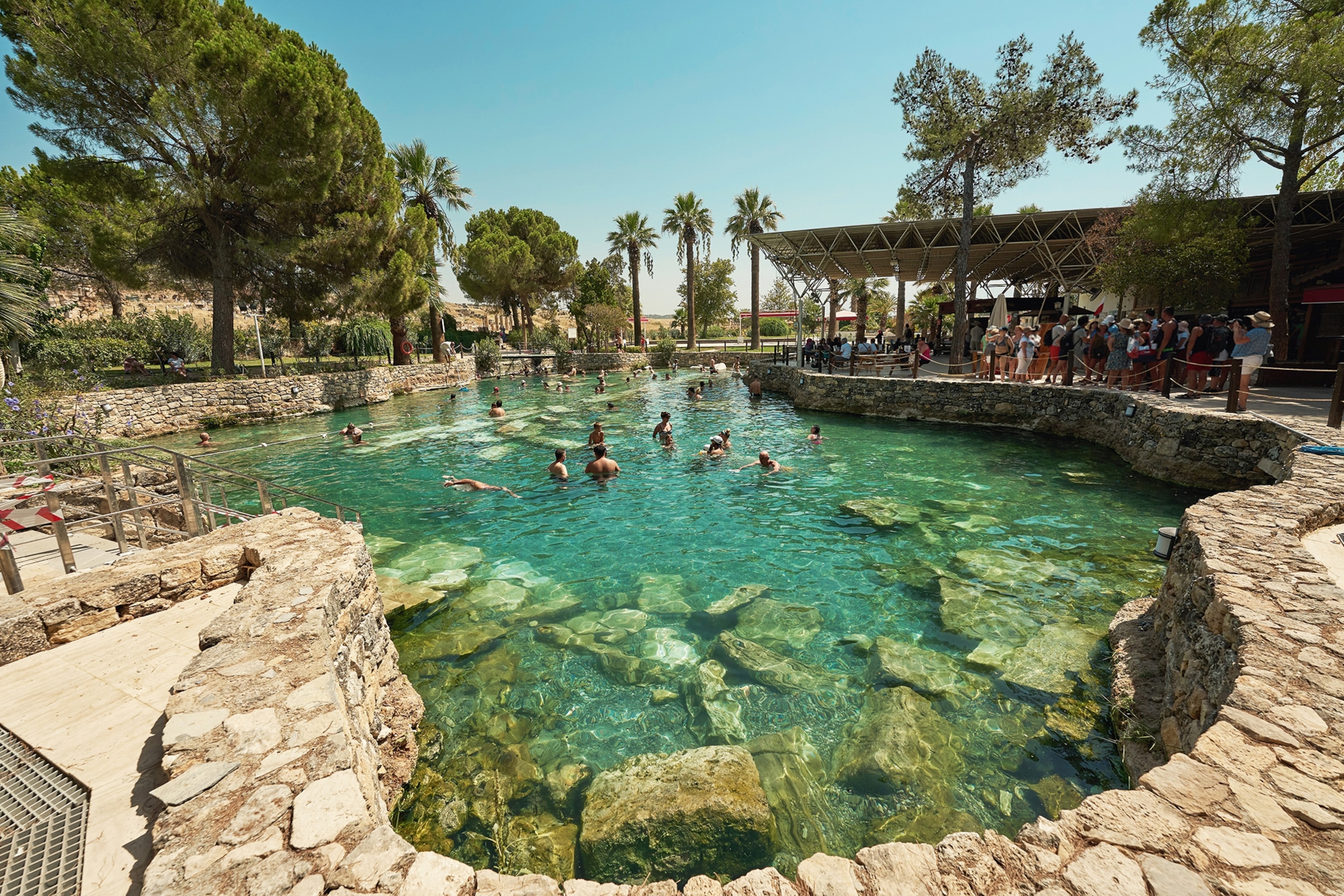
15. Scale terraces at Pamukkale
Pamukkale’s gleaming white limestone hill makes for arguably the most dramatic entrance to an archaeological site in Turkey. Visitors wade their way through the shallow aquamarine pools that speckle its travertine terraces, their sights set on the ruins of the ancient spa town of Hierapolis at the summit. Once there, they can bathe in the mineral-rich spring waters of the Cleopatra Pool, which first put Hierapolis on the tourist map, in the second century BCE. Those who want to get an early start — and experience the travertines and ruins without the crowds — should spend the night at the foot of the hill in Pamukkale town. JL
16. Surf the waves of the Black Sea in Ordu
Perşembe, a small town in Ordu province on Turkey's northern coast, has become a prime destination for surfers eager to conquer the waves of the Black Sea. While locals have bodysurfed in these waters for generations, board surfing is still a relatively new activity here. The trend was kickstarted by Deniz Toprak, whose father hails from Perşembe, when he returned from running a surf camp in Sri Lanka to set up Mellow Turkey — a surfing school and hostel that’s introduced the sport to locals and now attracts surfers from around the world. The best season is from June to September, when you can surf without a wetsuit. In autumn, the sea cools and the waves grow larger, while the lush landscape transforms into a stunning backdrop of golden leaves. Many travellers like to linger here, captivated by the beautiful forests that encircle the town and what Deniz describes as Perşembe’s “hygge-like atmosphere”. BY

17. Cycle Turkey's Aegean Coast
Near the Gediz Delta, a third of the way across Turkey’s section of the EuroVelo Cycle Route 8, a flamboyance of flamingos appears overhead. As if the 300-mile journey hugging the Aegean Coast isn’t dramatic enough, the honking birds provide a fiery-pink chevron escort along a corridor that was once the stomping ground of Greek poet Homer and Alexander the Great. Bookended by UNESCO-listed sites, this route across Izmir Province forms one small part of the cross-continent EuroVelo cycleways network. It opened in 2019 and was developed for average cyclists; though it takes four to five days to complete using a combination of quiet streets, bike paths and packed-gravel roads, riders can also tackle it as single day rides. It starts near the ruined city of Pergamon and ends in the ancient city of Ephesus. In between, cyclists pass through vineyards, nature reserves and seaside towns with bazaars and cafe-lined harbours, including Urla, Çeşme and Sığacık. AC
(How to explore Turkey's Aegean coast on two wheels.)
18. Tour Antalya’s historic core
Antalya — gateway city to one of Turkey’s most popular stretches of coast — has long been favoured for its beach. Yet the southern city’s Kaleiçi neighbourhood is awash with history. Enter through the triumphal arch of Hadrian’s Gate, commemorating Emperor Hadrian’s 130 CE visit, and head to the Sultan Alaaddin Camii mosque to admire its painted ceiling — a preserved fragment of its previous life as Panhagia Church in the 19th century. You could also pay a visit to the 13th-century Sefa Hamamı bathhouse for a hammam scrub. Ottoman mansions, all creaky timber and cumba (oriel windows), line Kaleiçi’s lanes and offer boutique-style accommodation — try White Garden Hotel or Tuvana Hotel. JL

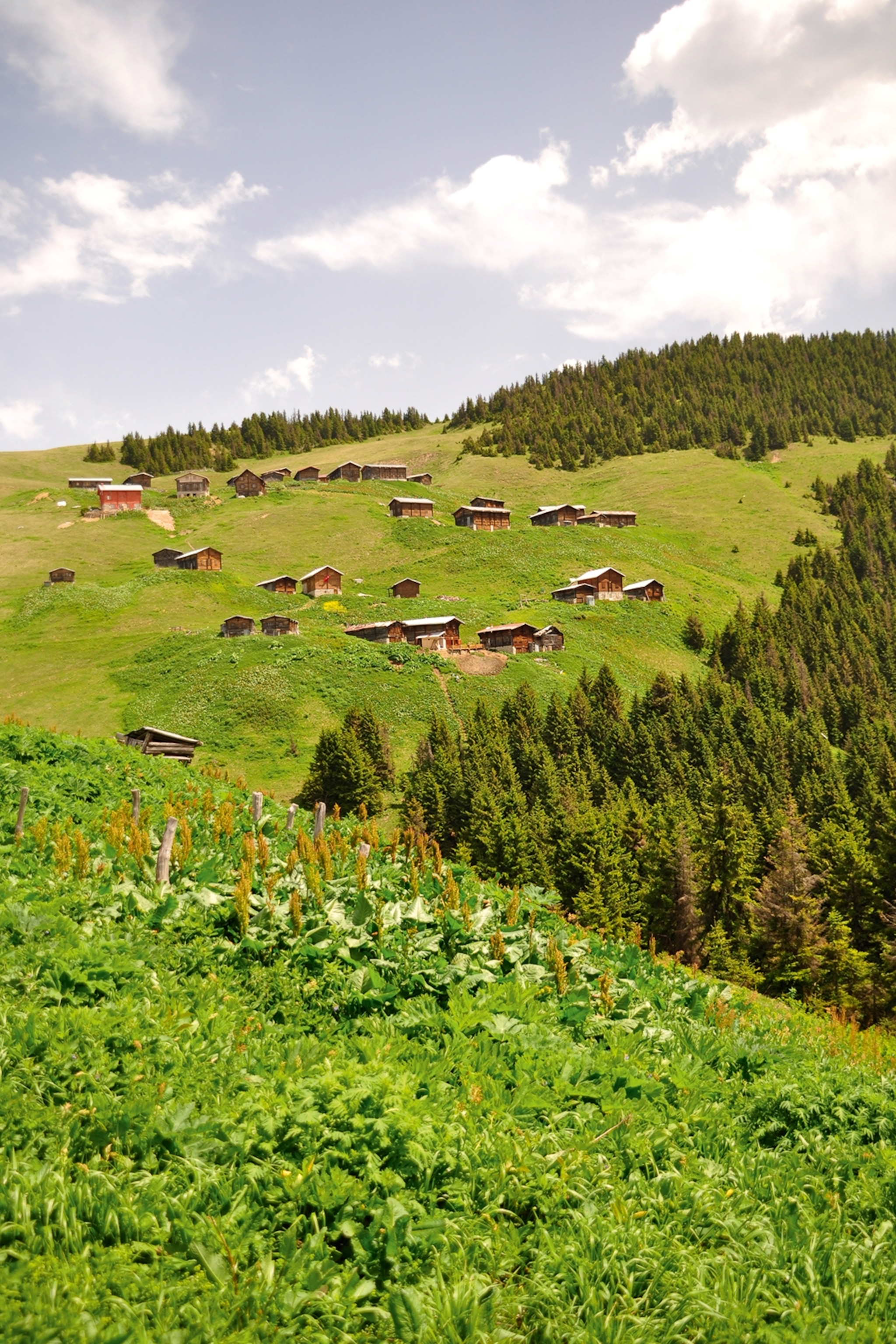
19. Stargaze in the highlands
After dark, the skies above the lush yaylalar (highland pastures) of the western Kaçkar Mountains sparkle with thousands of stars. Close to the Black Sea and Turkey’s border with Georgia, these remote hills, surrounded by an amphitheatre of craggy peaks, see little light pollution, making them an unbeatable stargazing destination. One particularly good spot is the long finger of meadow that’s home to the tiny settlement of Pokut Yaylası, straddling a 6,500ft-high ridge. Some of the highland timber houses here have been converted into comfortable guesthouses with attached restaurants — great bases for hiking by day and stargazing by night. With their terraces for taking in the views, Plato’da Mola and Pokut Orion are two of the best options. JL
20. Whirl with dervishes in Konya
The Mevlevis, known to the world as whirling dervishes, are a mystical Islamic order for whom whirling is a meditative prayer practice and also, in recent decades, a cultural heritage performance. Even for non-religious observers, attending a performance is a powerful experience. The skirts of the dervishes are perfumed with frankincense, and their whirling sends its heady scent through the air as the dancers become a blur of spinning tops, all in perfect time yet each one lost in his own ecstatic dance. The tradition started in the 13th century with the mystic and poet Jalal al-Din Rumi, who found inspiration for the act during a trip to Konya, an ancient city in central Turkey. Although performances are also staged in Istanbul and other major Turkish cities, the Mevlevi order’s heartland is still in Konya, making it the best place in the country to experience the whirling. Rumi’s followers whirl throughout the year, but the annual festival of Şeb-i Arûs, which commemorates the poet’s death every December, is a special time to travel to the city. DS
(The best time to see Turkey’s whirling dervishes.)
21. Dig into the farm-to-fork scene in Urla
Urla, once a stopover for Izmir residents heading to Çeşme Peninsula’s beaches, has transformed in the past few years into Turkey’s prime gastronomic destination. Dubbed ‘the Basque country of Turkey’, the small region is famous within Turkey for its high-end dining scene being deeply connected to its farming community. Michelin-starred, farm-to-fork restaurants such as Teruar and OD Urla work closely with local producers to craft hyper-locally sourced, seasonal menus. Another standout restaurant is Vino Locale, highlighting local delicacies like buttery blue-tailed shrimp and meaty artichokes in elaborate dishes. The area is particularly lovely from early spring to late autumn, when the weather is temperate and travellers can take full advantage of the bucolic landscapes where vineyards roll to the sea. BY
(How this tiny rural district became Turkey's unlikely gastronomic star.)
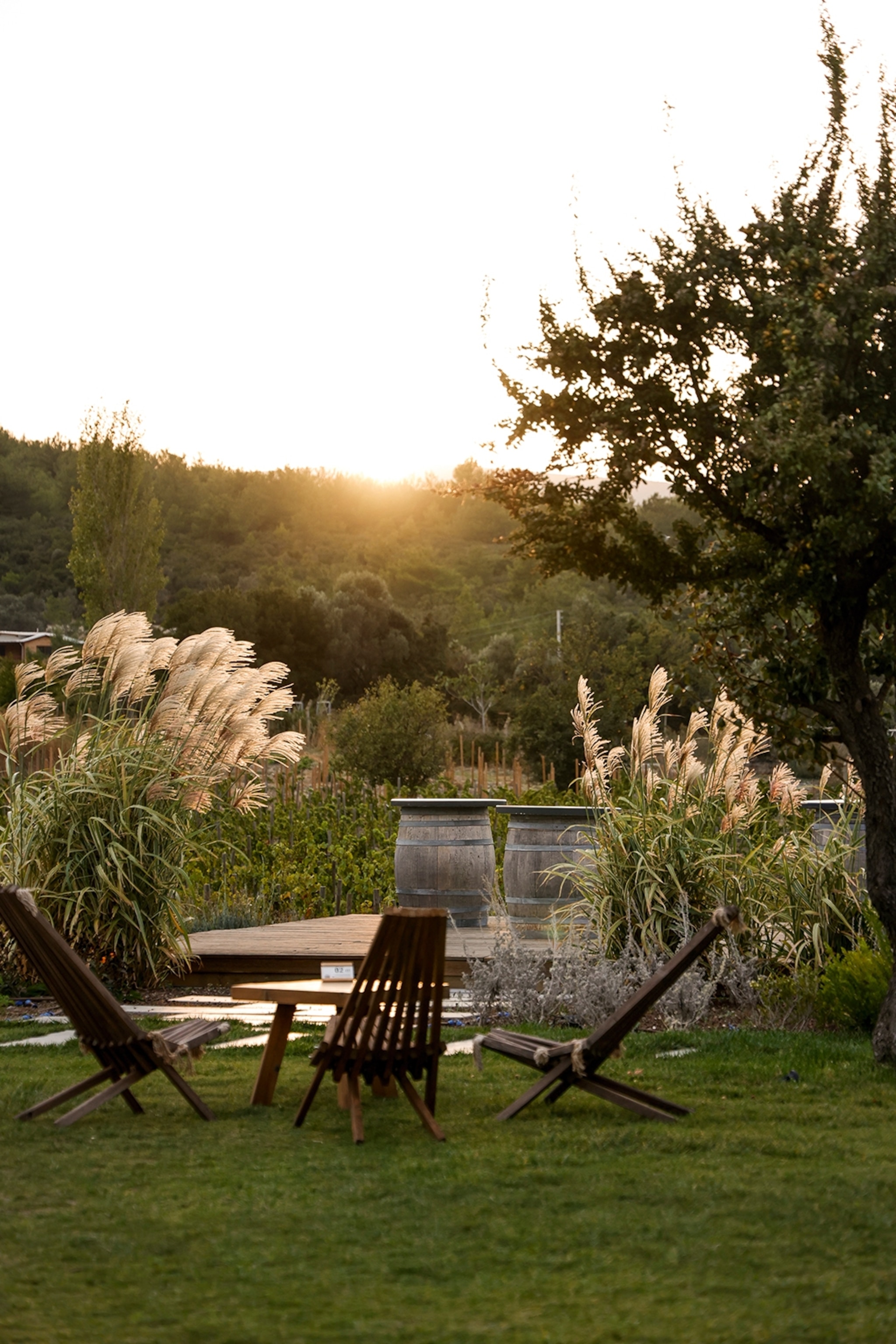
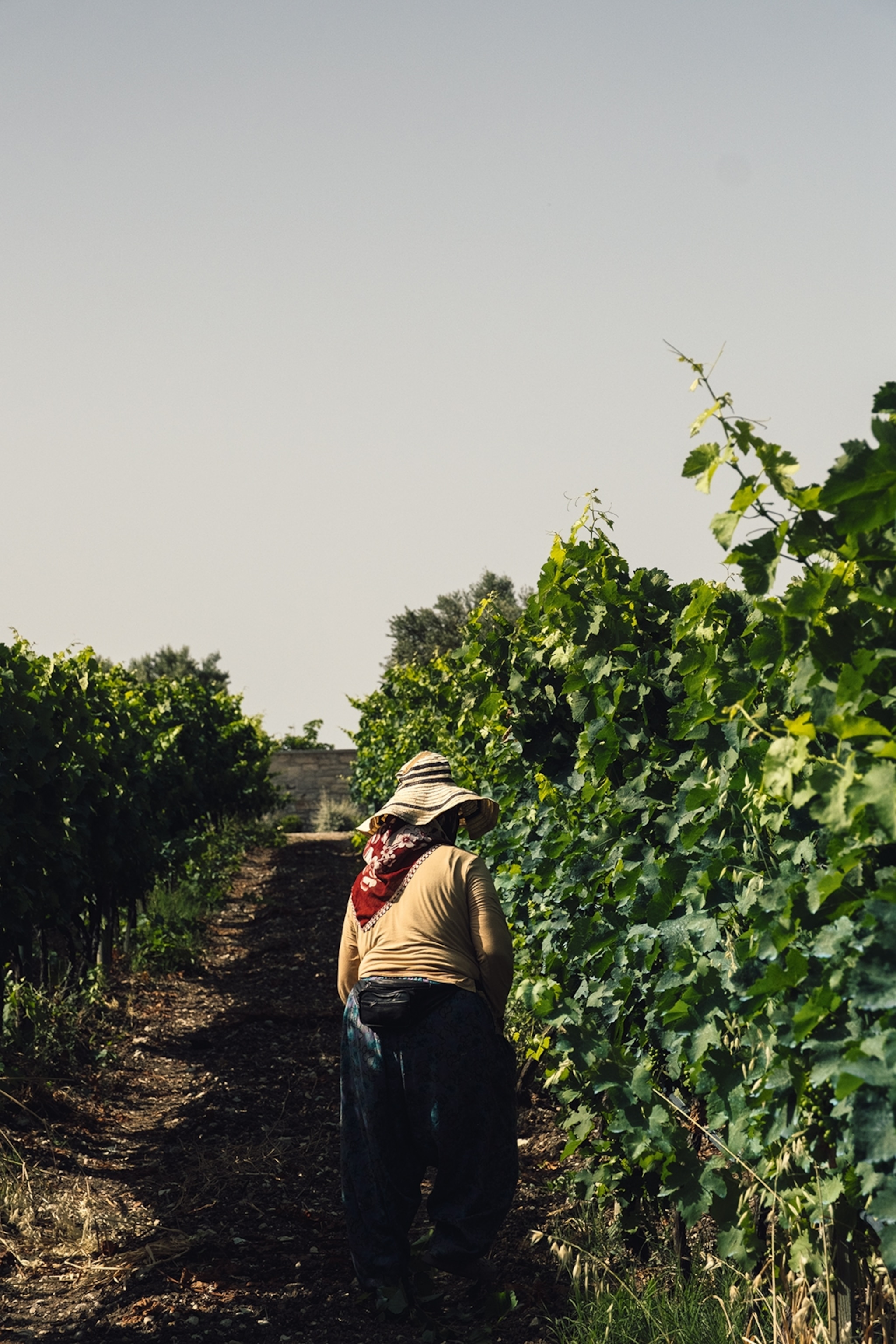
22. Taste-test homegrown Turkish wines
Though not widely known for its vineyards, Turkey is home to some of the earliest winemaking sites in history — and there are winery routes showcasing the country’s best cellar doors, keeping this legacy alive. Coming from Istanbul, the closest wine region lies along the Thrace Vineyard Route (Trakya Bağ Rotası), which brings together 12 producers from the city’s hinterland to the Greek border in Eastern Thrace. Off the coast of Gallipoli in northwest Turkey, travellers can visit the island of Bozcaada, which has been a winemaking hub since the fifth century BCE. Here, it’s possible to tour small-scale vineyards and sample local grape varieties like Karalahna, which make bold, tannic red wines. Further south, an hour’s drive west from Izmir, Urla has become a wine hotspot in the past decade. The Urla Vineyard Route (Urla Bağ Yolu) features eight boutique producers. Don’t miss the Urla Winery, for a tour and tasting of wines including bold and acidic reds made with endemic Urla Karası grapes. BY
23. Eat in the kebab capital of Turkey
Ask anyone in Turkey and they’ll tell you the best kebab — spelled kebap in Turkish — comes from the southeast of the country, in the city of Adana. The secret is the region’s access to grass-fed lambs from the Van province in the east, lots of flavoursome fat trimmings and the expertise of their grill masters. To make a classic Adana kebap, the meat and fat trimmings are minced, seasoned only with salt and hot pepper flakes and hand-pressed around a long steel skewer. Cooked over hot embers, the result is a meat that holds together yet remains tender and juicy with every bite. Traditionally, the dish is served with grilled peppers and tomatoes, a salad of onions, parsley and sumac, and pitta cooked on top of the meat on the grill so that the bread absorbs its juices. Locals recommend Kebapçı Mesut, a 103-year-old family restaurant famous for its kebabs across the country, and İştah Kebap, a hole-in-the-wall shop among the clothing stalls of the open bazaar. BY
The main ports of entry for air travellers to Turkey from the UK are Istanbul Airport and Istanbul Sabiha Gökçen Airport, Ankara’s Esenboğa Airport and the coastal cities of Antalya, Izmir, Bodrum and Dalaman. Turkish Airlines flies direct to its Istanbul hub from Heathrow, Gatwick, Manchester, Birmingham and Edinburgh, while budget airline Pegasus uses the smaller Sabiha Gökçen Airport. Both offer good domestic connections. Airports on the southwest coast are also well served by flights from the UK, with airlines including EasyJet.
Average flight time is around four hours to Istanbul, Ankara or Antalya. Major cities are linked by a high-speed rail network, operated by TCDD, which connects Istanbul with cities including Ankara (4h 30min) and Konya (5h), and Ankara with Kayseri, the gateway to Cappadocia (7h). Older train networks, such as the scenic Eastern Express to Kars, connect to the high-speed network. Towns on the Turkish Riviera are well connected by bus, as are smaller towns in Cappadocia.
When to go:
Turkey’s climate varies widely. There’s a Mediterranean atmosphere in the coastal southwest, where average temperatures in Antalya can hit highs of 35C in August and 15C in January, and a temperate climate in Istanbul, which sees highs of 29C in August and 9C in January; Istanbul often experiences heavy snowstorms in the winter. Cappadocia has hot summers and cold, snowy winters, with average highs of 31C and 4C in Göreme in August and January, respectively.
More info:
goturkiye.com
Rough Guide to Turkey. £17.99
Turkey: A Short History, Norman Stone. £10.99
To subscribe to National Geographic Traveller (UK) magazine click here. (Available in select countries only).
